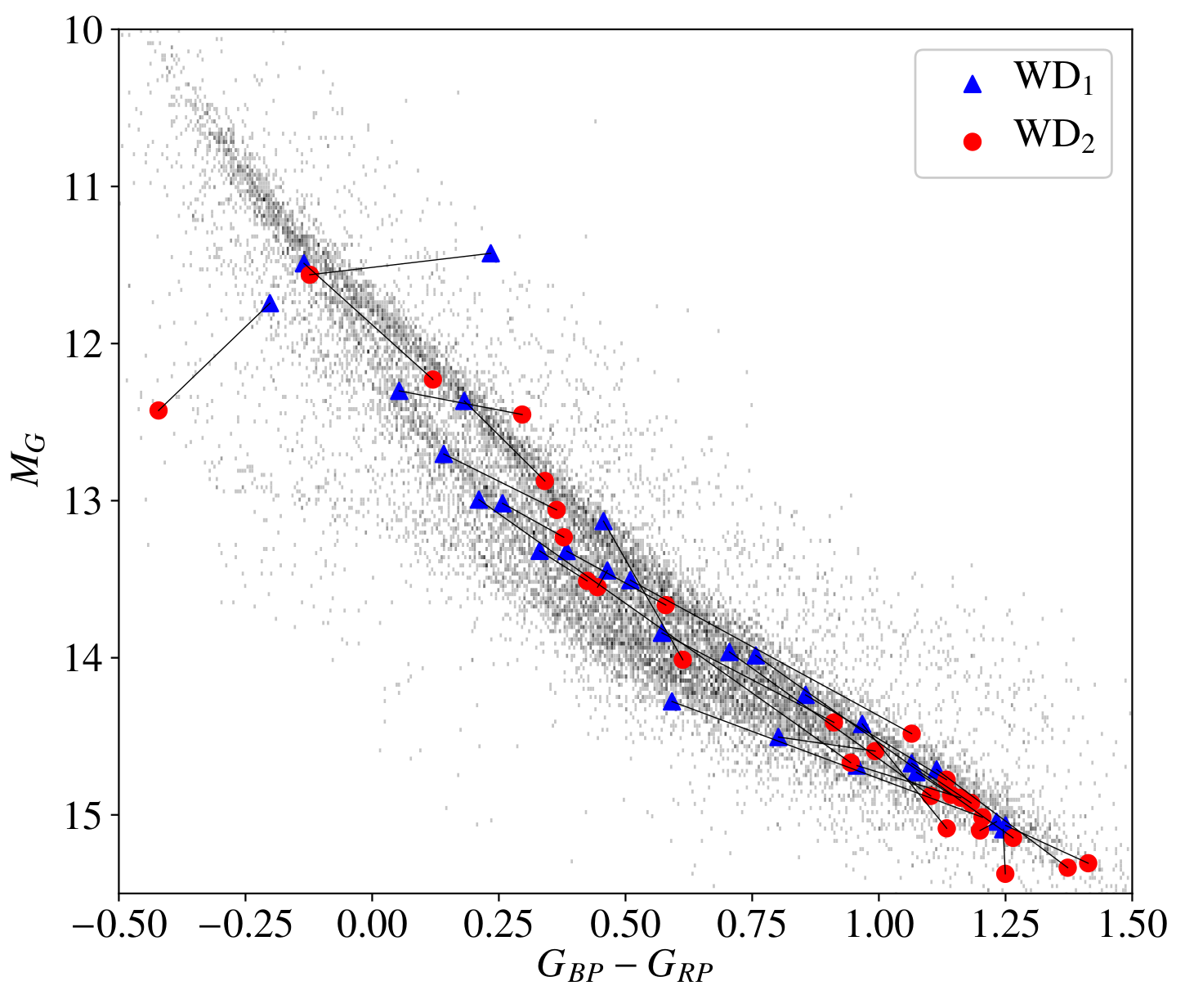Limiting the population of collisional triples using Gaia DR2

The collisional-triple SN Ia progenitor model posits that SNe Ia result from head-on collisions of double WDs, driven by dynamical perturbations by the tertiary stars in mild-hierarchical triple systems. To reproduce the Galactic SN Ia rate, at least ∼30−55% of all WDs would need to be in triple systems of a specific architecture. We tested this scenario by searching the Gaia DR2 database for the postulated progenitor triples. Within a volume out to 120 pc, we searched around Gaia-resolved double WDs with projected separations up to 300 au, for physical tertiary companions at projected separations out to 9000 au. At 120 pc, Gaia can detect faint low-mass tertiaries down to the bottom of the main sequence and to the coolest WDs. Around 27 double WDs, we identified zero tertiaries at such separations, setting a 95% confidence upper limit of 11% on the fraction of binary WDs that are part of mild hierarchical triples of the kind required by the model. As only a fraction (likely ∼10%) of all WDs are in <300 au WD binaries, the potential collisional-triple progenitor population appears to be at least an order of magnitude (and likely several) smaller than required by the model.
For further reading:
- Na'ama Hallakoun and Dan Maoz "Limits on a population of collisional-triples as progenitors of Type-Ia supernovae" 2019, Monthly Notices of the Royal Astronomical Society, 490, 657